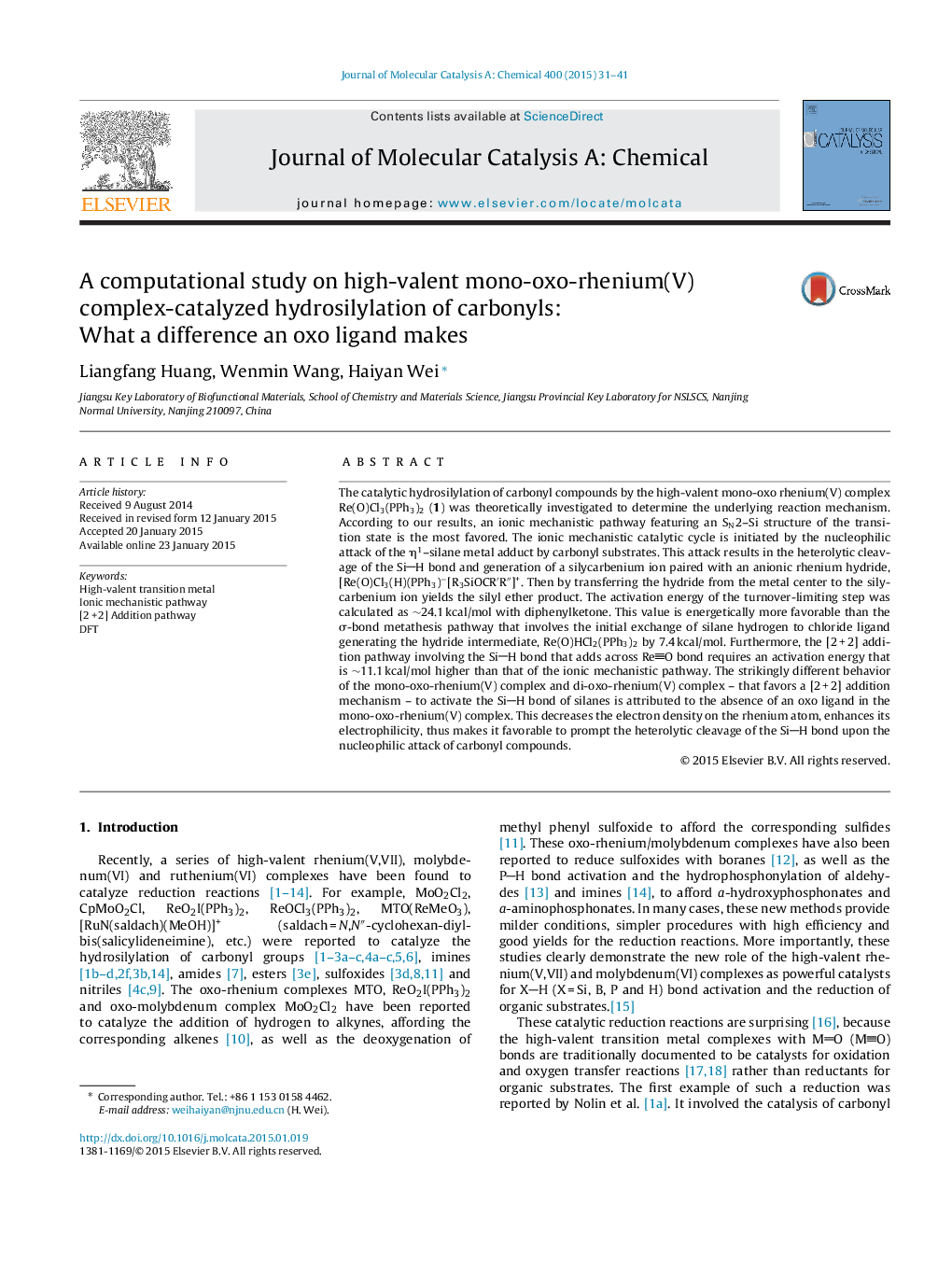| کد مقاله | کد نشریه | سال انتشار | مقاله انگلیسی | نسخه تمام متن |
|---|---|---|---|---|
| 65056 | 48381 | 2015 | 11 صفحه PDF | دانلود رایگان |

• Re(O)Cl3(PPh3)2 catalyzed the hydrosilylation favoring an ionic pathway.
• The [2 + 2] addition pathway is 11.1 kcal/mol higher than the ionic pathway.
• The σ-bond metathesis pathway is 7.4 kcal/mol higher than the ionic pathway.
The catalytic hydrosilylation of carbonyl compounds by the high-valent mono-oxo rhenium(V) complex Re(O)Cl3(PPh3)2 (1) was theoretically investigated to determine the underlying reaction mechanism. According to our results, an ionic mechanistic pathway featuring an SN2–Si structure of the transition state is the most favored. The ionic mechanistic catalytic cycle is initiated by the nucleophilic attack of the η1–silane metal adduct by carbonyl substrates. This attack results in the heterolytic cleavage of the SiH bond and generation of a silycarbenium ion paired with an anionic rhenium hydride, [Re(O)Cl3(H)(PPh3)−[R3SiOCR′R″]+. Then by transferring the hydride from the metal center to the silycarbenium ion yields the silyl ether product. The activation energy of the turnover-limiting step was calculated as ∼24.1 kcal/mol with diphenylketone. This value is energetically more favorable than the σ-bond metathesis pathway that involves the initial exchange of silane hydrogen to chloride ligand generating the hydride intermediate, Re(O)HCl2(PPh3)2 by 7.4 kcal/mol. Furthermore, the [2 + 2] addition pathway involving the SiH bond that adds across ReO bond requires an activation energy that is ∼11.1 kcal/mol higher than that of the ionic mechanistic pathway. The strikingly different behavior of the mono-oxo-rhenium(V) complex and di-oxo-rhenium(V) complex – that favors a [2 + 2] addition mechanism – to activate the SiH bond of silanes is attributed to the absence of an oxo ligand in the mono-oxo-rhenium(V) complex. This decreases the electron density on the rhenium atom, enhances its electrophilicity, thus makes it favorable to prompt the heterolytic cleavage of the SiH bond upon the nucleophilic attack of carbonyl compounds.
Figure optionsDownload high-quality image (151 K)Download as PowerPoint slide
Journal: Journal of Molecular Catalysis A: Chemical - Volume 400, 1 May 2015, Pages 31–41